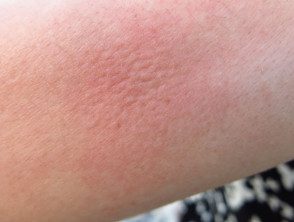What is an ant bite?
An ant sting occurs when an ant stings by using its mandibles and mouth to pinch human skin. The bite differs from the sting: the ants sting with their sting, the flow-Most of their bodies. Fire ants grab the skin (sting) and then inject poison with their stinger (which is immediately painful). Other species of ants do not bite or sting, but spray formic acid.
Who gets stung by an ant?
Anyone in contact with ants is at risk of ant bites or stings, especially if they are in an area where ants build their nests. Ant nests are in the form of several mounds with varied diameters, sometimes reaching more than 0.5 meters and several centimeters in height.
Ants tend to be more numerous in areas with:
- compact floor
- bare ground
- little ground cover
- few big trees
More about ants
Ants belong to the order of insects Hymenoptera, under the family of Formicidae. The order Hymenoptera includes bees and wasps.
There are more than 12,000 species of ants. Although almost all can bite or sting, few cause significant local damage and/or systemic reaction in humans. Most ants are too small to bite humans effectively, and their sting is mild. However, the sting of harvester ants and fire ants can cause unpleasant symptoms and can lead to allergic reactions.
What are the clinical features of ant bites and stings?
The normal reaction to many forms of ant sting/sting is located Contact urticaria (illustrated), The normal reaction to a fire ant sting or sting is immediate pain and a red spot, followed a few hours later by a tender, itchy pustule that can last several days or weeks. It is common for a person to experience multiple bites.
Normal reaction to ant bites/stings

Localized urticarial reaction to ants
Allergic reactions to bites and stings of ants.
In general, allergic reactions to hymenoptera stings are milder than stings. Allergic reactions to hymenoptera are classified into 4 categories:
local reaction
Local reaction is the most common reaction to venom injected by ants. It consists of localized pain, itching, redness, swelling and hardening. The swelling is usually less than 5 cm in diameter and is sometimes urticarial (hives). The local reaction lasts less than 24 hours.
Great local reaction
A large local reaction (pain, erythema, blisters, swelling and itching) involves larger areas of skin (5 to 10 cm) near the bite / sting. In most cases, severity peaks in 1 to 2 days, with resolution taking 7 to 10 days.
Mild systemic reaction
Mild systemic reaction involves skin and/or gastrointestinal system and affects less than 1% from ant stings/stings (0.4 – 0.8%). Skin manifestations include itching, angioedema, hives and redness in areas distant from the bite / sting in more generalized distribution. Symptoms from the gastrointestinal system may consist of mild nausea, diarrhea, and/or cramps.
Severe systemic reaction
A severe systemic response to ant venom is marked by clinical manifestations in 2 organ systems distant from the sting/sting, such as angioedema (especially of larynx), flushing, hoarseness, wheezing /bronchospasm, chest pain, hypotension, dizziness, severe abdominal pain, profound vomiting, or uterine cramps.
How are ant bites/stings diagnosed?
Diagnosis of ant stings/stings is based on clinical findings and relevant exposure, or possible exposure to ants. reference for allergy testing is warranted only in cases presenting with a severe systemic reaction. For isolated systemic skin reaction (large local reaction), skin tests are not required due to the risk of having anaphylaxis after a subsequent ant bite/sting is extremely low.
What is the treatment for ant bites/stings?
Treatment for ant bites/stings depends on the type of reaction. First remove the ants from your skin and wash the affected area. Apply a cold compress to soothe itching and reduce swelling.
Treatment for local reactions and large local reactions.
Immediate handling:
- Oral antihistamines for itching and hives.
- Analgesics such as acetaminophen/paracetamol if the pain is dominant
- Short course of oral corticosteroids for a large local reaction when inflammation it's slow to solve
- Insect avoidance education: remove visible ant nests, avoid walking barefoot, wear pants and long-sleeved shirt when participating in outdoor activities
Long-term management:
- Education to avoid insects in areas where there are poisonous ants. predominant
- Wear shoes and socks when outside
- Wear work gloves when gardening.
Treatment for mild and severe systemic reaction
Immediate handling:
Adrenaline/epinephrine injection
- Basic life support for anaphylaxis
- Immediate referral to the emergency room.
Antihistamine injection as an adjunct
Long-term management:
- Epinephrine pen for patients with severe systemic reaction with education on how to use it
- Allergy specialist referral for skin testing and venom immunotherapy
- A limited systemic reaction to urticaria in children <16 años no necesita inmunoterapia
What is the result of ant bites/stings?
- The possibility of having a serious systemic disease. allergic reaction After an ant/insect bite it is higher in adults (especially >45 years) than in children. Approximately 85% in adults with a systemic allergic response are classified as a severe reaction, while only 40% in children.
- Less than 1% from ant stings cause a more severe reaction after a new sting.

